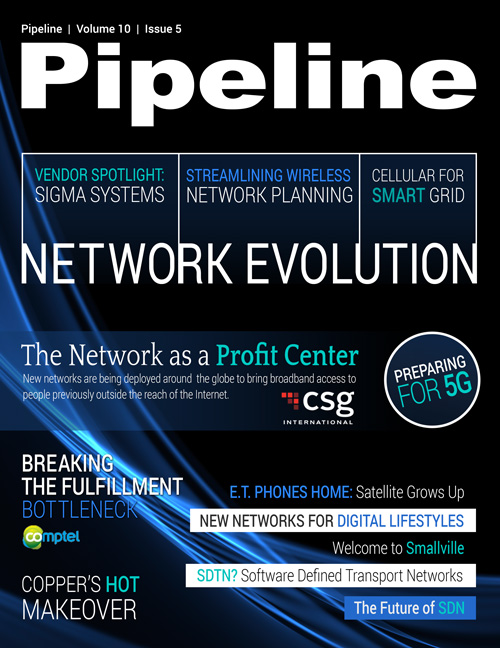Communications and Entertainment Technology News
By: Jesse Cryderman

LTE 2.0
The second wave of LTE rollouts is occurring around the world, and by 2016 more data will move across 4G networks than 3G ones, says ABI Research: traffic on 4G networks is growing at a rate of roughly 82 percent year over year. Cheaper, more powerful devices and rapid LTE deployment work in concert to drive mobile-video consumption, which makes up the bulk of traffic on 4G networks.
“Already, Verizon saw video accounting for 50 percent of its network traffic earlier this year,” wrote Ying Kang Tan, an ABI research associate, last month. “ABI Research believes global annual video consumption will soar at a CAGR [compound annual growth rate] of 60.6 percent” and top 100 exabytes by 2018.
Among equipment vendors, Ericsson, Huawei and Nokia Solutions and Networks (NSN) lead the pack, according to an operator survey conducted by Infonetics Research, with Alcatel-Lucent rounding out the top four. The positioning on the leaderboard may be changing, however: as Pipeline was going to press, Alcatel-Lucent announced a landmark deal with China Mobile to support the world’s largest mobile-service provider in its deployment of 207,000 TD-LTE base stations. Ericsson, Huawei, NSN and ZTE were also selected as part of the multivendor rollout.
While China Mobile rushes to light up nearly a quarter of a million LTE sites, the first commercial LTE-Advanced (LTE-A) networks are going online across the East China Sea in South Korea. SK Telecom, Korea Telecom and LG U+ have launched commercial LTE-A networks, which boast download speeds to rival those of many terrestrial broadband networks and deliver on the true promise of 4G wireless. As these networks come online and the advanced feature sets of LTE-A, such as carrier aggregation, are enabled, cellular transmission rates of one gigabit per second (Gbsp) will be possible.A key player in the evolving LTE-A market is NSN. The company’s innovative Flexi Multiradio Base Stations are being used in all three of its LTE-A networks. The base stations were deployed during initial LTE rollouts, and a simple software upgrade enabled operators to ramp up to LTE-A.
The rapid increase in LTE deployment is driving an even larger increase in LTE Diameter signaling. Oracle has published its second annual Oracle Communications LTE Diameter Signaling Index, and here’s the key takeaway: Diameter signaling over 4G LTE is growing more than twice as fast as LTE thanks to more complex, personalized mobile services.
Although this represents a significant problem for mobile operators, it should come as no surprise. As plans and services become increasingly personalized, dynamic and flexible, the policies that govern them must be more sophisticated, leading to a massive increase in the communication between network elements on the control plane. How massive? Oracle measures Diameter signaling by messages per second (MPS), which total 1.2 million today, but within four years Diameter traffic will grow to 99 million MPS.
Mobile operators must be on their toes to avoid the signaling-related outages that sidelined some LTE networks in the past.




















